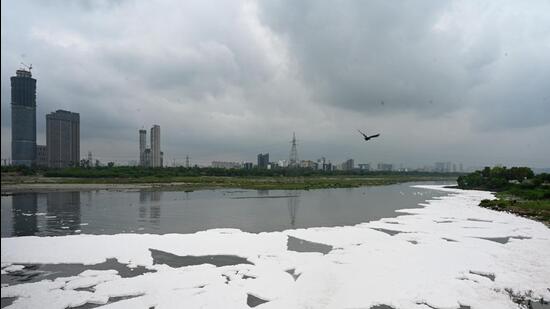
Amid this environmental crisis, the Yamuna River is blanketed in toxic foam, particularly near Kalindi Kunj, raising concerns about the severe water pollution it reflects. The foam, composed of harmful chemicals and untreated sewage, has become an annual phenomenon due to industrial discharge and agricultural run-off, further exacerbated by minimal water flow during this season. This pollution has turned the Yamuna into a hazardous water body, unfit for both human and animal use.
Residents in Delhi-NCR are raising alarms over the air quality, which continues to deteriorate as seasonal factors like stubble burning and the onset of winter trap pollutants close to the surface. The government has been attempting to control the situation through measures like restricting vehicle movement, but the pollution levels remain stubbornly high. Schools in the area are preparing for potential closures as pollution forecasts show no signs of immediate relief.
The smog situation is compounded by the rising vehicular emissions and construction dust, both major contributors to Delhi’s poor air quality. Despite efforts like the introduction of cleaner fuels and banning the use of firecrackers, the capital continues to face some of the highest pollution levels in the world, particularly during this time of year. Additionally, agricultural stubble burning in neighboring states contributes significantly to the particulate matter in the air.
Authorities are also grappling with limited success in dealing with the toxic foam in the Yamuna River, which is an environmental and health hazard. Measures like water sprinkling, using anti-foaming agents, and temporarily diverting industrial waste have had minimal impact, as the root cause—untreated waste from factories and other pollutants—remains largely unaddressed.
